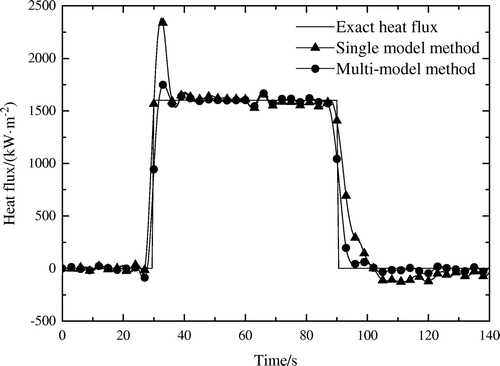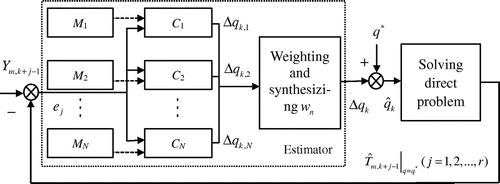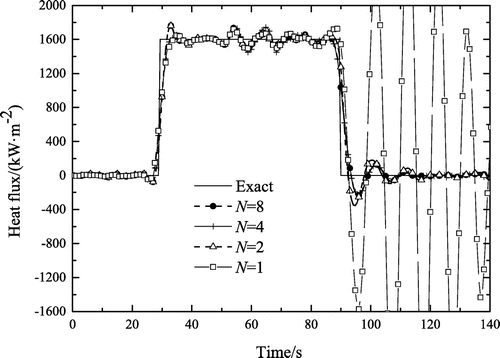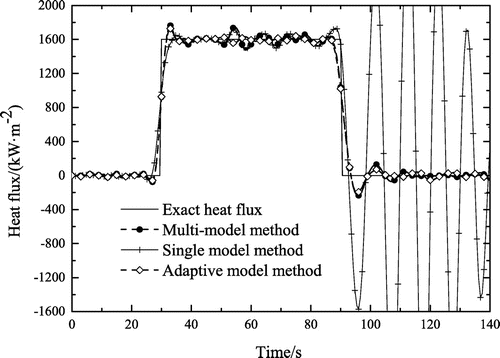Figures & data
Figure 1. (a) One-dimensional transient heat conduction system. (b) Grid division of time and space.
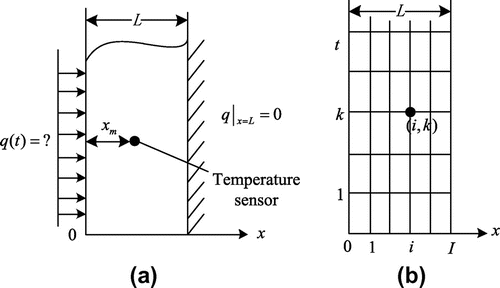
Table 1. Thermal properties of Armco (99.75% pure) [Citation20].
Figure 3. Comparison of temperature evolution calculated by the heat balance method in this work and the finite element software Comsol.
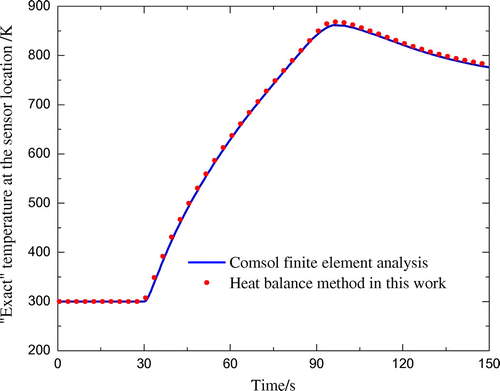
Table 2. Effect of the number of local models on the inversion results.
Table 3. Comparison of the single model, adaptive model and multi-model method.
Figure 6. DMC digital filter coefficients at different balance point temperatures ( K2 m4 W−2, kp = 30, kf = 10, tk = 18 s).
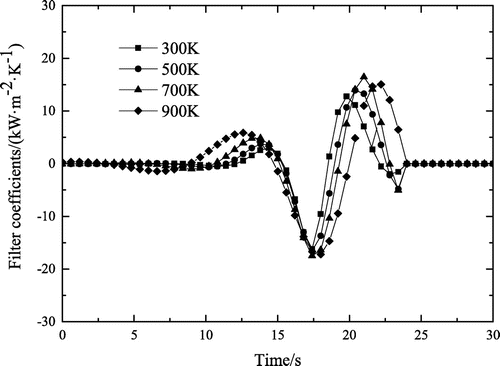
Figure 7. The DMC digital filter coefficients for α = 5 × 10−10, 1 × 10−10 and 5 × 10−11 K2 m4 W−2 (kp = 30, kf = 10, tk = 18 s, = 600 K).

Figure 8. Effect of the initial guess value of the surface heat flux on the inversion results by DMC filter. ( K2 m4 W−2)

Figure 9. Comparison of the inversion results of multi-model and single model method associated with DMC digital filter with noisy-free measured temperature. ( K2 m4 W−2, kp = 20, kf = r = 10).
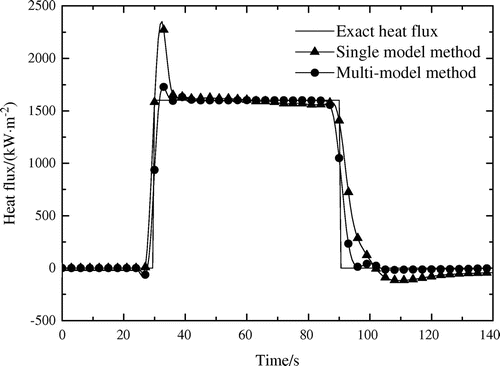
Figure 10. Comparison of the inversion results of multi-model and single model method associated with DMC digital filter with K. (
K2 m4 W−2, kp = 20, kf = r = 10).
